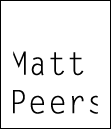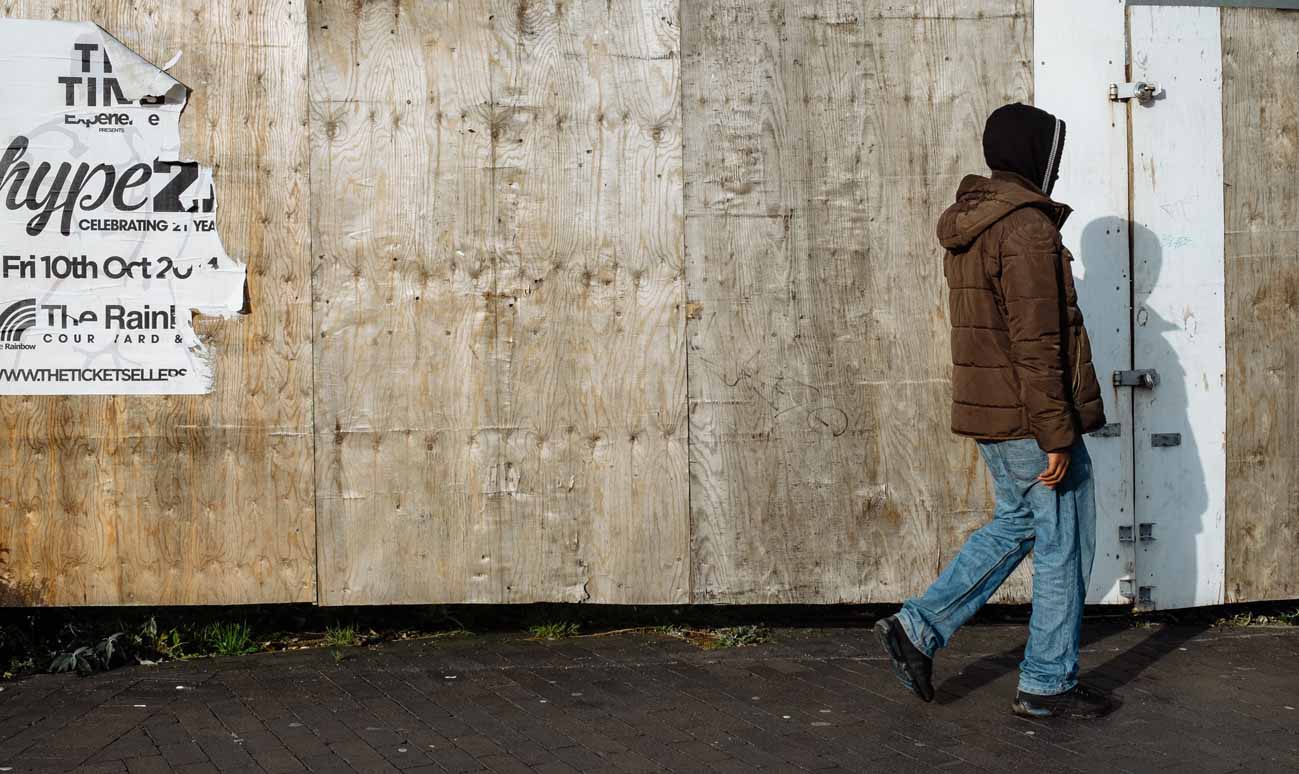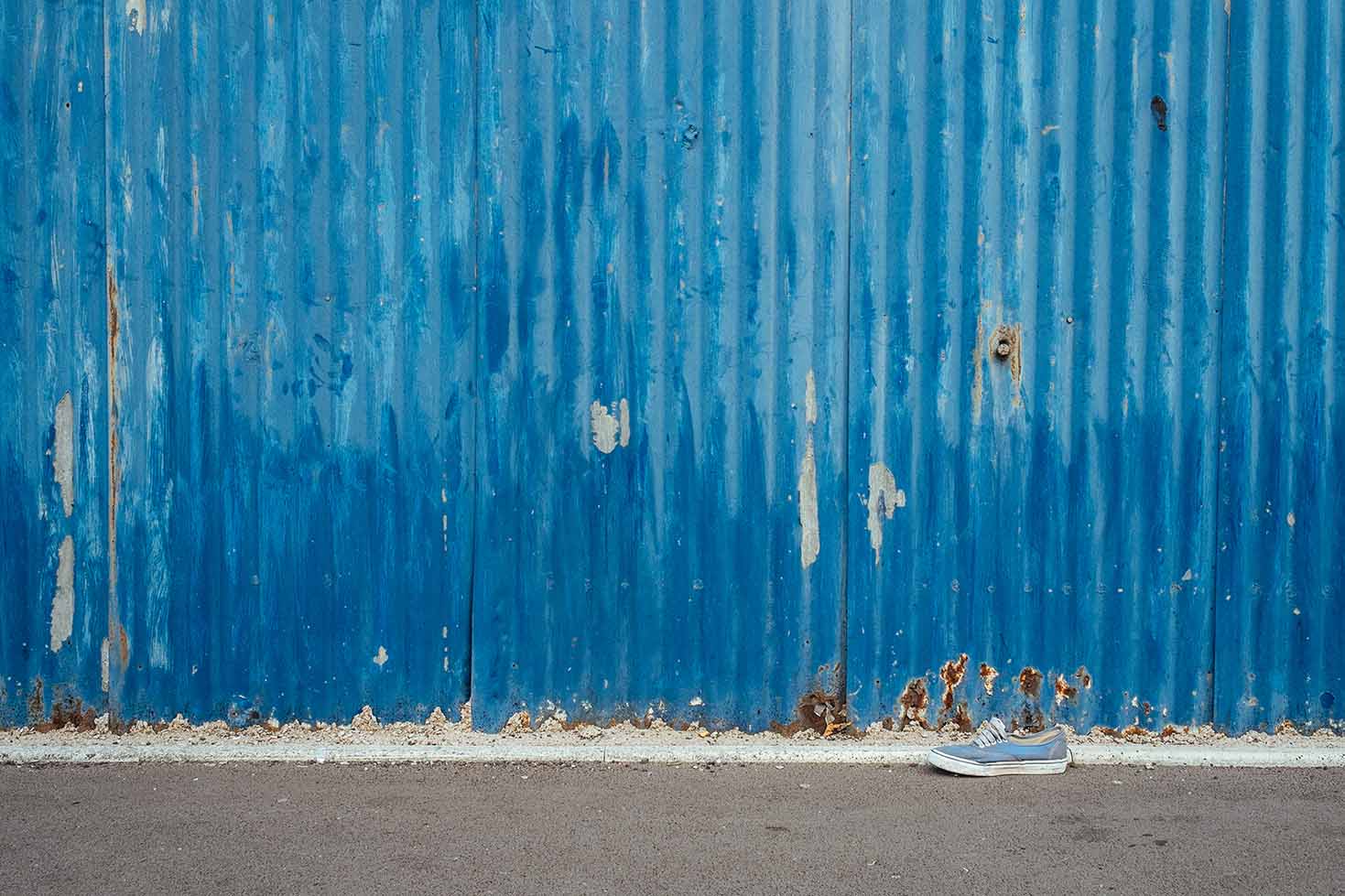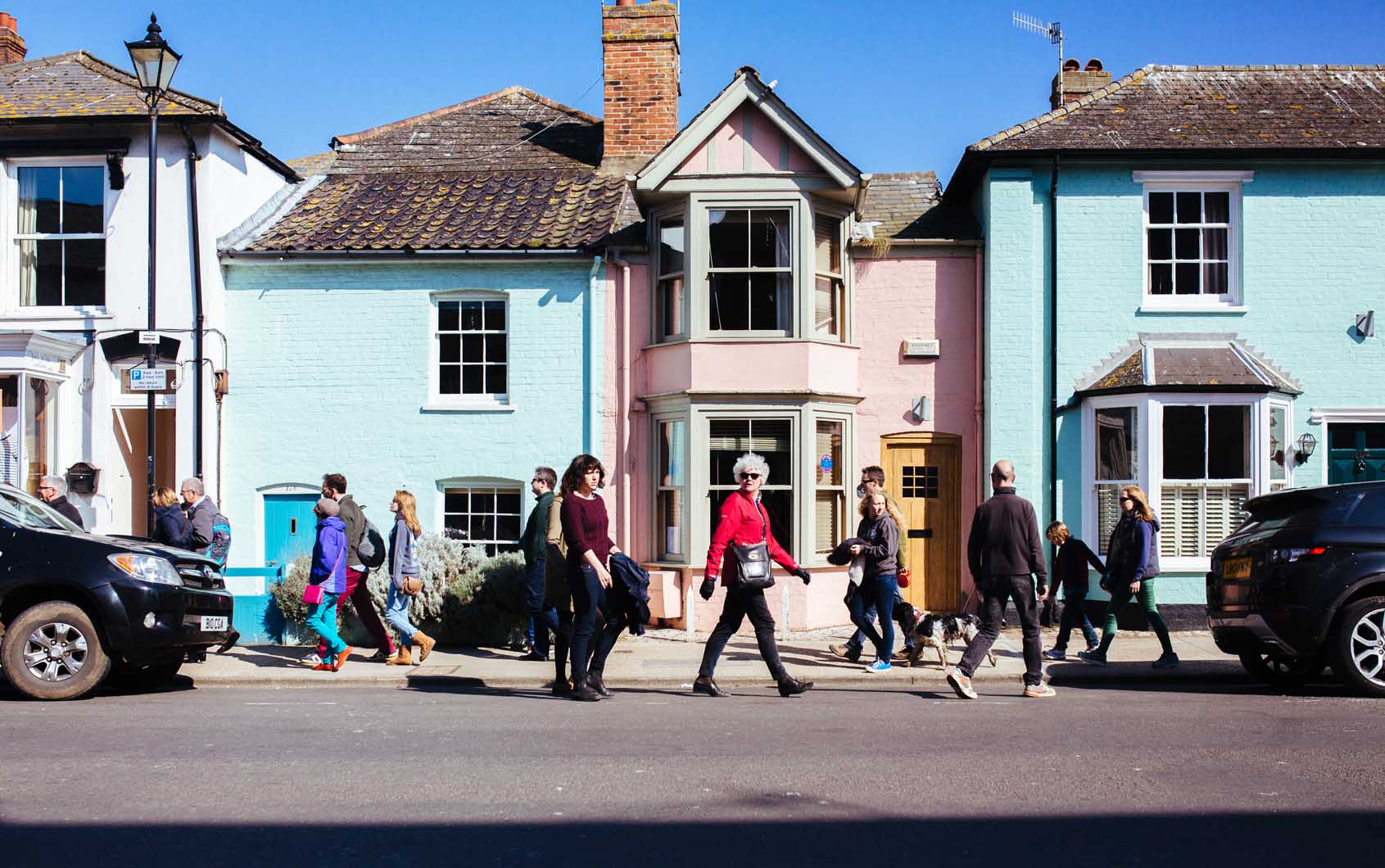To paraphrase the great David Bailey, we all have a truly great image in us, but the difference with him is he will have many, many more. It is rare to get as many great images in one life time as Bailey, but we can aim for more than just the one.
Read MoreTechnique
A place just beyond your shoes
Since the rain forced me to look down for a whole day earlier this year , I've continued to explore the floor for inspiration. "Look up" was the regular instruction from my Dad on our occasional visits to the city centre. I was missing all the intricate architecture above my eye line was his reason, but I also suspect he didn't like the sight of me, head bowed Kevin the Teenager style, traipsing alongside him. It's oft given photographic advice too - without looking up you're missing out on potentially wonderful images. The same can be said for looking down, as there is a whole world of shapes, shadows and detail that are easily over looked. Here then are just some of the types of images you can capture by just gazing past your feet.
Abstract
Road markings, curbs and natural detritus can create some wonderful abstracts if you look beyond their normal functions. The unique position of having a birds eye view over your subject enables you to frame images unavailable from a normal perspective. You can even get practice from the comfort of your own home by choosing a google map view and pointing towards different parts of the street.
Shadows
You can look for shadows at any time of the year, but the low sitting winter sun casts deep and interesting shadows to play with.
Reflections
Autumn and Winter
If the ideas and images above don't particularly appeal to you, autumn and winter provide more traditional photographic material with fallen and ice frosted leaves.
So, if you're out about with or without a camera, don't forget to look down as well as up. I mean, when you come to think of it how much of the world is really best captured looking forward from head height...?
Till next time...
Matt Peers
Behind the image #7
After spending my available time editing the images from a hugely enjoyable family photo-shoot, you realise that, like life, photography is really just about paying attention to the details...
Till next time,
Matt Peers
Standing allowed...this much I know.
I think it is fair to say that I am not going to achieve a level of fame where the weekend paper life style sections want a pithy one page interview with me and thoughts on photography. But if they did, it would be something like this...
Treat photographers like musicians
In other words, get to know their genre, current and back catalogue. It's not only enjoyable, it actually starts to feed in to and improve your own images. To get started, go through the Magnum photographers' galleries and feast your soul there. Alternatively, you could enjoy the images of musicians taken by John Morgan
Image courtesy of John Morgan
The web is great, but the printed page is better
The majority of the images you look at will be on some sort of screen, which is understandable. A book however, gives you a tactile, closer relationship with the images the screen just can't match. A real beauty is the recent Martin Parr compendium if you want to put it to the test.
Better still, buy the book after visiting the exhibition
It's like going to see them live and listening to the CD later.
Or in this case just visit the exhibition...
Ditch the zoom and get a fixed prime lens
I've spent so much time and money expanding my optical options only to come full circle and realise for street and portraiture work, I only need one lens - a 35mm prime. If I need to get closer or further away I now move my feet.
Two very different images but both taken with the same 35mm prime lens
Try and do something everyday
To improve in any activity, practice, practice and more practice is required. It's heartening to read books like Matthew Syed's Bounce and Malcolm Gladwell's Outliers argue 10,000hours of practice leads to greatness rather than just innate talent. To practice more I needed to stop thinking photography as an appointment hobby , i.e. weekend after next I'm going out to use my camera, to one where a camera is with me most of the time. For some that might be a smart phone, for me it meant buying another camera small enough to carry but still high in image quality.
Don't get hung up on effects
I've noticed for some people when they get in to photography they aim for techniques such as light trails and slow shutter wire wool burning shots for their wow factor ( I hold my hands up - I was no different). Yes, they can look spectacular, but after a while they just become , well, a bit boring really.
Edit carefully
Can't tell which one of the 17 near identical images you like the most? Well, don't display them all for us to decide. Hard as it might be choose just the one, as for every near identical image you add the original impact decreases dramatically.
A forced smile is like a faked male orgasm...
...its easy to spot and nobody leaves feeling great. An honest expression will always make for a better portrait compared to a forced grin.
Till next time...
Matt Peers
My Bad? Good!
Probably more often than some photographers would admit, the image you want to take doesn’t happen. Technical failure or good old fashioned human error, it doesn’t matter; it’s way off what you intended. Once you’ve noticed an error, it is very tempting to quickly delete it and move on. Indeed, you may be short of memory... but before you do, hold off and try and see what it looks like on a proper screen.
The small proportions and lower resolution of an in-camera screen is not as honest a reflection of the image as you may think, so you could well be throwing some pictural babies out with your digital bath water. Out of focus blurring, for example, can add rather than detract from the impact of the image. Would Robert Capa’s D Day landing image have the same impact if it was pin sharp?
Of course many mistakes aren't worth recovering, but once you rescue a beauty, what then? Have a look at the image meta data - i.e. what was the aperture, exposure time, lens focal length? By understanding that and what went wrong you could now have a technique to add to your repertoire that you can explore again and again. However, If you can't for the life of you fathom how it was done ...well, just put it down to kismet and enjoy the results.
Till next time...
Matt Peers
Look!
One of the biggest for photographers is the fear of a lack of inspiration and boredom with what they are doing. Many put this down to being in the same place for too long and not being stimulated by the challenge of somewhere new - preferably exotic. In the late 90s I attempted to hold on to my youth and decided to go around Australia till my money ran out ( I know, it was a cliche even then). Sitting in a pub in the middle of the outback, I shared life stories with a leather faced, alcohol fuelled local. As a rural Aussie born and bred, he thought my living in London was the height of adventure. I ,on the other hand, revelling in the outdoor life of hiking, campfires and dawn till dusk sunshine would have happily swapped my rain filled, cramped commuting life at the drop of a hat. The reality, of course, is the grass always looks greener - or in this case, outback orange.
There is an inherent danger in the desire for the new, as it can stop you looking at what is around you in your everyday life. Think of that car journey you do over and over again.The monotonous routine can regularly leave you unable to remember any significant details of it. This state of mind is the photographers' enemy and to combat it last year I started a project that focuses my attention on the mundane elements of life, in particular the building where I work . There's nothing particularly special about it, in fact the building is a poor example of 1960s architecture - all brutal and without the drama and retrospective cool of the period. And yet, like people it has good and bad days, can be full of light and shade and even a touch mysterious. So, here’s to Baker Building; my portrait of a place and to continually looking.
Till next time...
Matt Peers
Teacher for the day
Following my ' Do something blog' on street photography I was contacted to see if I could help a young student with her street photography module in her photography GCSE. Putting aside my jealously that you can not only now study photography for GCSE, but you can also choose a street photography project, I said I would be delighted to help.
The first thing we needed to decide was a theme for the images to follow. As Birmingham has a history of industrial and social change, we agreed the theme of old and new would be broad enough to encompass the diverse aspects of Birmingham street life. Next on our agenda was to brush up on the technical know how of operating the camera and gaining control away from the auto mode. Whilst cameras are getting ever smarter to deliver the best it can automatically, if you take an amazing image but are unable to understand how it was done, you're unable to replicate it whenever you want. Rather than making the camera fully manual, the aperture priority mode was selected so that all you had to decide was how much of your shot was in focus. For example, if you wanted to take a landscape image and wished for all of the image to be in focus it would be a high f number between 11- 22. Or, if you wanted a portrait to pop out from a blurred background, that's a low number generally between 1.4 and 4.0.
Not only teacher, but but I was also a model for the morning. Image copyright Katya Hall
Our first location was in the heart of the chocolate Mecca of the midlands - Bournville. Nestled between Victorian terraced houses the Bournville Cafe is an old fashioned greasy spoon somehow shielded from the omnipresent Starbucks and Costa coffee shops. With its varnished pine walls, chips with everything menu and mugs of tea for 60p, it was an ideal place to get the creative juices flowing.
To contrast this vision of yesteryear we headed off to Birmingham's wonderful arts complex, The Custard Factory. The once site of the nation's Birds Custard production has for over 20 years been reimagined as a diverse arts and retail complex.
The hustle of the collectors market made for lots of wonderful people watching. Image copyright Katya Hall
Image copyright Katya Hall.
It was also a great chance to experiment with street portraiture, talking to the locals and seeing what opportunities existed for a shot out of the ordinary. We got that chance after the charming owners of the skating shop opened the indoor ramp located within the railway arch. As the skaters did there stuff, Katya and I got a chance to experiment with low light and action photography, and in keeping with our theme, demonstrate how skater culture had made something new out of an old Victorian railway arch.
The surreal combination of mask and man in low light creates a wonderful combination in this image. Image copyright Katya Hall.
An off centre portrait allowed the image to show the colour of the complex and the matching attire of our subject.Image copyright Katya Hall
Whilst the weather was still holding up we decided to finish the day with an exploration of the new in the form of the rebuilt Bullring shopping centre. Taking photographs in shopping centres is something that has to be done carefully as it is not always clear as to what is public and private property. Without prior formal permission taking photos inside the shopping centre is not permitted, so to be on the safe side we kept to the public walkway that runs between the two halves of the site. Fortunately, this allowed us a great way of experimenting with the flow of the crowd against the modern retail architecture.
The reflections from the rain and the movement of the shoppers add to the atmosphere in this scene. Image copyright Katya Hall.
Katya's confidence with her camera and street photography techniques blossomed throughout the day, and as I'm sure you'll agree, she has taken some outstanding images for her Photography GCSE. You don't need to be studying for a GCSE if you fancy either getting to grips with your camera or to take your first steps in street photography. Why not drop me a line at matt@me-and-iphotography.co.uk or via Facebook to see what what we can do? I’ll even throw in a mug of tea...
Thanks to Yumm Cafe and Ideal Skate Supply for their help in making it such a successful day.
Till next time.
Matt Peers





















OK, it wasn't an exclusive 'hang out with Matt Stuart day' but the next best thing - a Street Photography workshop in conjunction with the Photographers Gallery in London. As postgraduate fees have gone through the roof, I've decided,for now at least, to keep my continual professional development to attending workshops and buying books. And what a valuable day of learning it was!